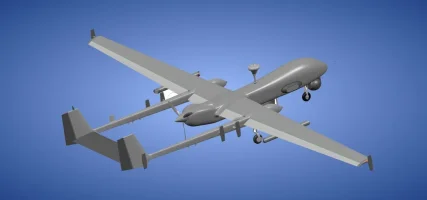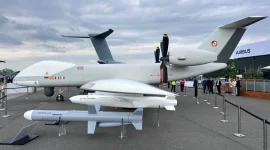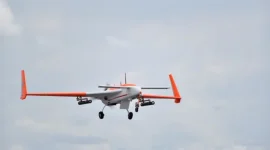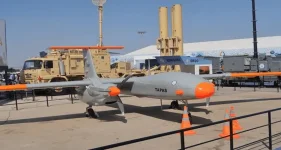- Views: 4K
- Replies: 10
India's indigenous unmanned aerial vehicle (UAV) program has achieved a significant milestone, as the new Archer-NG drone has successfully passed critical ground trials.
The Aeronautical Development Establishment (ADE), a key laboratory under the DRDO, confirmed that the drone has completed both low and high-speed taxi tests, paving the way for its first flight.
The maiden flight is anticipated to take place in the first week of August 2025, following final airworthiness certification from the Centre for Military Airworthiness and Certification (CEMILAC).
The successful completion of high-speed taxi trials is a crucial validation phase in any aircraft's development.
These tests are designed to assess the UAV's performance and stability on the ground at high speeds, verifying the integrity of its airframe, landing gear, braking systems, and engine controls before it is cleared for airborne operations.
This step ensures the aircraft can handle the stresses of takeoff and landing, marking the final stage of pre-flight validation.
The Archer-NG is a Medium Altitude Long Endurance (MALE) drone, designed to operate at altitudes up to 30,000 feet for extended periods.
Powered by a 177-horsepower indigenous turbocharged engine, it boasts an impressive endurance of 29 hours.
With a total weight of 1,800 kg, it is built for persistent intelligence, surveillance, and reconnaissance (ISR) missions over both land and sea, addressing a critical need for long-duration monitoring capabilities for the Indian Armed Forces.
In addition to surveillance, the Archer-NG is equipped for light combat roles.
The UAV features two hardpoints capable of carrying a combined weapons payload of 300 kg. This allows it to be armed with a variety of munitions, including precision-guided bombs and air-to-ground missiles, giving it a precision strike capability.
This dual-role function is a key part of India's strategy to develop versatile and cost-effective defence platforms under the 'Atmanirbhar Bharat' (Self-reliant India) initiative.
Developed to fill a strategic gap between smaller tactical drones and the larger Rustom series of UAVs, the Archer-NG is set to provide the armed forces with a versatile platform for a wide range of operations.
Its successful development and induction will enhance India's domestic defence manufacturing capabilities, reduce dependence on foreign imports, and provide a customizable system for border surveillance and targeted military actions.
The upcoming flight in August will be a landmark event for India's growing expertise in unmanned aerial systems.




